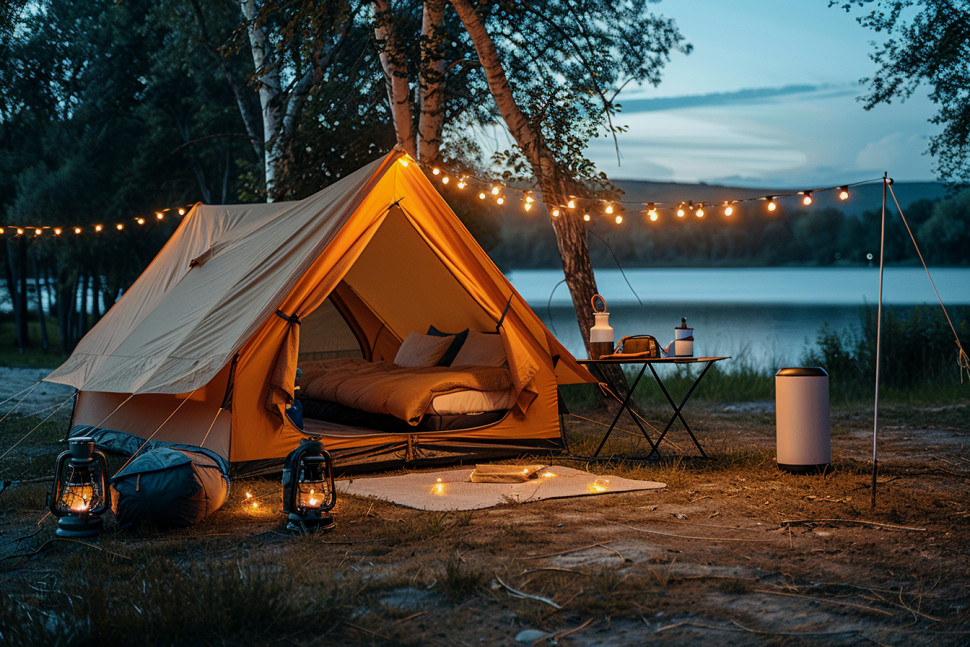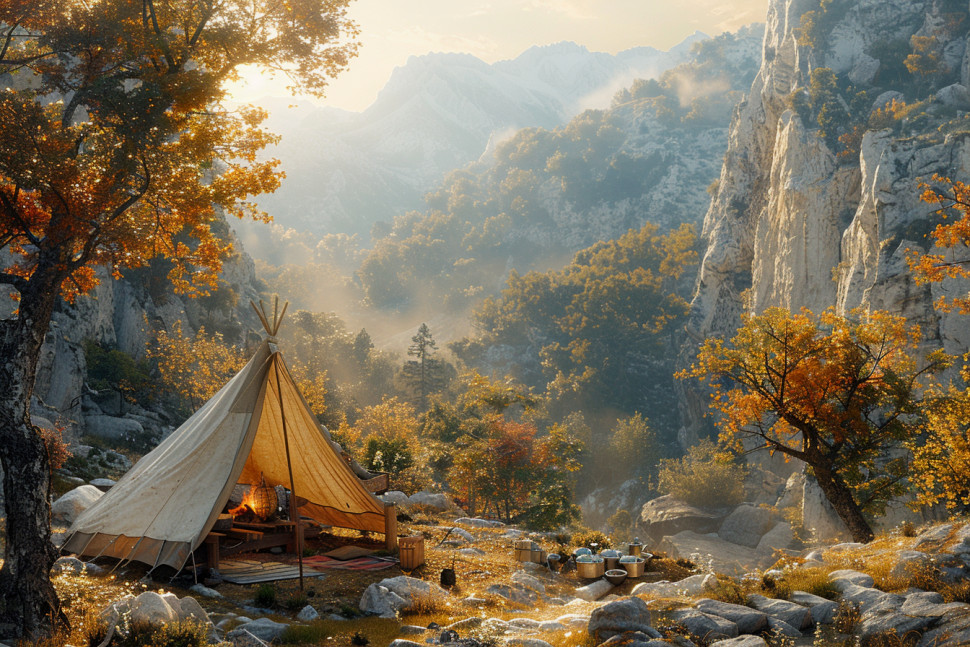The Best Equipment For Wilderness Camping

Key Takeaways
- Essential wilderness camping gear includes a quality tent, sleeping bag, sleeping pad, cooking equipment, and backpack
- Look for lightweight, durable, and weather-resistant gear designed for backcountry use
- Invest in high-quality items that will last for many camping trips
- Rent or borrow equipment before making big purchases to ensure it meets your needs
Heading out on a wilderness camping trip is an incredible way to immerse yourself in nature, far from the hustle and bustle of daily life. To fully enjoy your backcountry adventure, it's important to have the right gear that will keep you warm, dry, comfortable and safe in remote areas. While the array of camping equipment options can feel overwhelming, a handful of key items are essential for any overnight in the great outdoors.
In this article, we'll break down the most important pieces of wilderness camping gear - tents, sleeping bags, sleeping pads, cooking equipment, and backpacks. We'll share what features to look for, provide our top product recommendations in each category, and offer some tips for gearing up on a budget. By the end, you'll be well-equipped to hit the trail for an unforgettable wilderness camping trip.
Tents: Your Backcountry Shelter
Your tent is your home away from home in the wilderness, sheltering you from the elements and providing a cozy place to sleep under the stars. When choosing a tent for backcountry camping, key considerations are weight, durability, ease of setup, and weather resistance.
Look for lightweight tents made with strong yet packable materials like ripstop nylon or polyester. Many tents have a waterproof rainfly and bathtub-style floor to keep you dry in wet weather. Aluminum poles are light and sturdy. For windy or exposed campsites, choose a tent with a low profile and good guylines.
Our top picks:
- REI Co-op Half Dome SL 2+ Tent: Roomy, durable, and easy to pitch
- Big Agnes Copper Spur HV UL2 Tent: Ultralight with a spacious interior
- MSR Hubba Hubba 2-Person Tent: All-around excellent lightweight tent

Sleeping Bags: Stay Warm Through the Night
Along with your tent, a quality sleeping bag is crucial for a good night's rest outdoors. Sleeping bags are rated by temperature, usually for 15-50°F for 3-season use. Down fill is lightweight and compressible but more expensive, while synthetic is cheaper, insulates if wet, but is heavier and bulkier.
Mummy bags are snug and efficient for colder temps. Semi-rectangular bags offer more wiggle room. Women's specific bags are shaped for narrower shoulders and wider hips. Consider extras like stash pockets, sleeping pad sleeves, and vents.
Our favorites:
- REI Co-op Magma 15 Sleeping Bag: Lofty and light 850-fill down
- Marmot Trestles 15 Sleeping Bag: Best value synthetic bag
- Feathered Friends Egret UL 20 Women's Sleeping Bag: Ultralight and cozy
Sleeping Pads: A Comfortable Foundation
A sleeping pad is just as important as your bag for warmth and comfort, insulating you from the cold ground. There are three main types: air pads you inflate, self-inflating pads with open-cell foam, and closed-cell foam pads.
Air pads pack down the smallest but can puncture. Self-inflating pads are a good middle ground for comfort and durability. Foam pads are cheap and indestructible but bulky. Insulation is measured by R-value - higher values are warmer.
Top sleeping pads:
- Therm-a-Rest NeoAir XLite Sleeping Pad: Ultralight inflatable pad
- NEMO Tensor Insulated Sleeping Pad: Thick, stable, and warm
- Therm-a-Rest Z Lite Sol Sleeping Pad: Durable foam pad, doubles as camp seat
Camp Kitchen Essentials
Wilderness camping means preparing your own meals in the backcountry. To make things easy, look for a compact and efficient camp stove like the MSR PocketRocket 2 or Jetboil Flash. Pair it with a lightweight pot set such as the GSI Outdoors Pinnacle Dualist.
Don't forget two durable water bottles or a hydration reservoir, plus a water filter like the Sawyer Squeeze to purify water from natural sources. Bring a mug, bowl, and utensils. A small cutting board and knife are handy. Store everything in a lightweight bear canister in areas with bears, or hang your food.
Backpacks: Carrying Your Gear
A comfortable, supportive, and spacious backpack makes hauling your gear into the backcountry a breeze. Look for an internal-frame pack with padded shoulder straps and hip belt, multiple compartments, and attachment points for your tent, sleeping pad, and trekking poles.
Pack capacity is measured in liters - 45-60L is good for overnight trips, while 60-80L works for multi-day excursions. Make sure to get fitted at a store to find the right torso size and hip belt for your body. Women's specific packs are shaped for narrower shoulders, wider hips, and shorter torso lengths.
Quality backpack options:
- Osprey Atmos AG 65 Pack: Comfortable and feature-rich
- REI Co-op Flash 55 Pack: Lightweight and customizable
- Deuter Aircontact Lite 45+10 SL Pack: Women's specific pack with great ventilation

Gearing Up on a Budget
Building your wilderness camping kit from scratch can be expensive, but there are ways to save. Watch for sales at big retailers like REI or Backcountry.com, especially around holidays like Labor Day or Memorial Day.
Consider buying used gear from online marketplaces like GearTrade or REI Used Gear. Rent equipment from your local outdoor store to test it out before buying. Invest in versatile, high-quality items that will last for years of use to get the most bang for your buck.
A Feast In The Heart Of Nature: Wild Edible Plants To Discover When Camping
When camping in the heart of nature, one can discover a bountiful array of wild edible plants that add a unique and flavorful dimension to outdoor feasting. From tangy dandelion greens to nutty acorns, the wilderness offers a gastronomic adventure like no other. Foraging for these natural delicacies not only provides sustenance but also a deeper connection to the environment. It is essential to properly identify and prepare these wild edibles to ensure a safe and enjoyable dining experience under the open sky. Embrace the abundance of nature's pantry on your next camping trip and savor the delights of wild edible plants.
Survival Techniques for Wilderness Camping
When embarking on wilderness camping adventures, it is crucial to master survival techniques to ensure a safe and enjoyable experience. Building a shelter using natural materials and understanding how to start a fire without matches are essential skills. Additionally, knowing how to purify water from natural sources and forage for edible plants can be life-saving. It is also important to be aware of wildlife behavior and how to safely navigate through the wilderness. By learning and practicing these survival techniques, campers can confidently face the challenges of the great outdoors.
Conclusion
With the right equipment, your wilderness camping trip will be a comfortable and memorable adventure. A quality tent, sleeping bag and pad, cooking setup, and backpack are the foundation of your kit.
Remember to choose lightweight, durable, and weather-resistant gear designed specifically for backcountry use. Try renting or borrowing items before making big purchases. Watch for sales and buy used to save money.
Most importantly, get out there and enjoy all the amazing experiences that wilderness camping has to offer, from starry nights to stunning alpine vistas to the deep tranquility of the backcountry. With the proper gear and preparation, you'll be ready to answer the call of the wild again and again.
